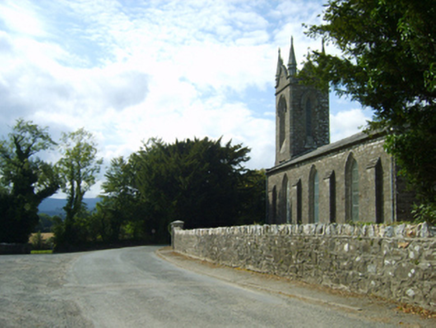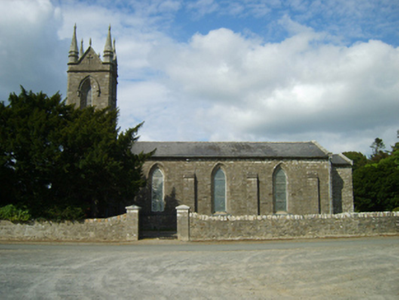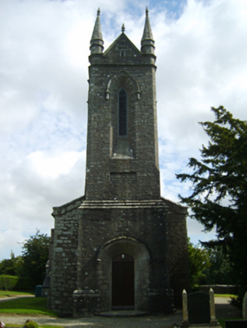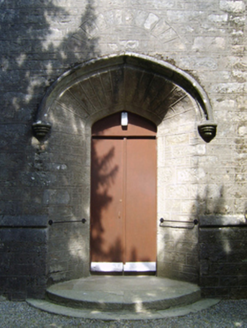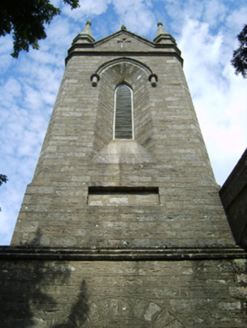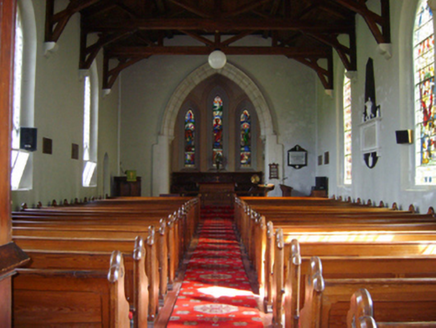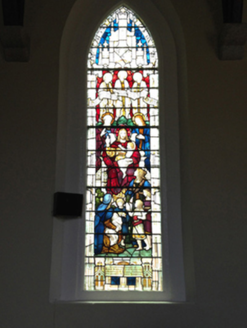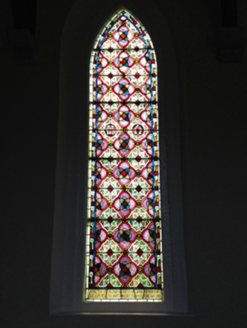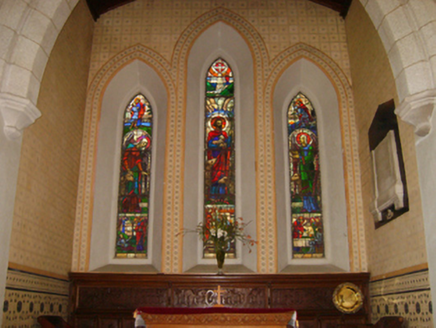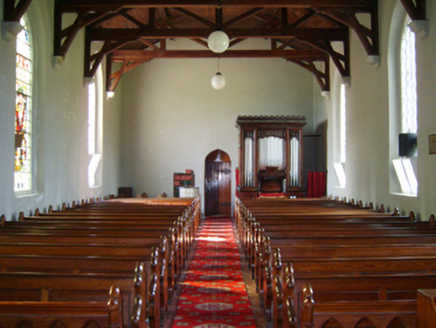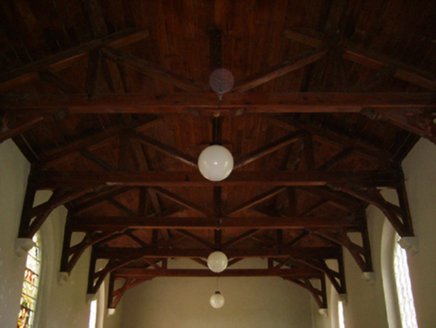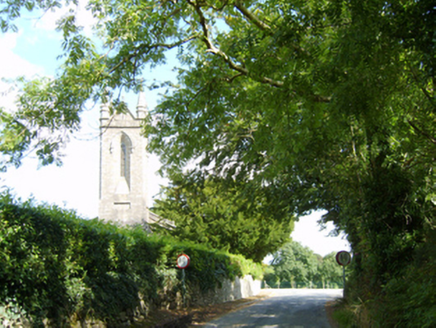Survey Data
Reg No
15701813
Rating
Regional
Categories of Special Interest
Architectural, Artistic, Historical, Scientific, Social, Technical
Original Use
Church/chapel
In Use As
Church/chapel
Date
1830 - 1835
Coordinates
284934, 141966
Date Recorded
28/08/2007
Date Updated
--/--/--
Description
Detached four-bay double-height Board of First Fruits Church of Ireland church, designed 1826; built 1832-3; consecrated 1833, on a rectangular plan comprising three-bay double-height nave opening into single-bay double-height chancel (east) with single-bay two-stage tower to entrance (west) front on a square plan. Renovated, 1901, with interior "improved". Pitched slate roofs with lichen-covered clay ridge tiles, lichen-covered cut-granite "saddleback" coping to gables, and cast-iron rainwater goods on cut-granite eaves retaining cast-iron octagonal or ogee hoppers and downpipes. Part repointed tuck pointed snecked rubble stone walls with snecked rubble stone stepped buttresses having cut-granite "slated" coping; part repointed tuck pointed snecked rubble stone surface finish to tower on cut-granite chamfered cushion course on plinth with cut-granite "Cavetto" stringcourse (bell stage) supporting cut-granite octagonal pinnacles centred on "Balistraria"-detailed gabled parapets having cut-granite coping. Lancet window openings with repointed surrounds having chamfered reveals framing fixed-pane fittings having cast-iron lattice glazing bars with some having iron mesh storm panels over fixed-pane fittings having stained glass margins centred on leaded stained glass panels. Lancet "Trinity Window" to chancel (east) with cut-granite block-and-start surround having chamfered reveals framing iron mesh storm panels over fixed-pane fittings having stained glass margins centred on leaded stained glass panels. Tudor-headed door opening to tower with cut-granite steps, and repointed surround having splayed reveals with hood moulding over on label stops framing replacement double doors having overpanel. Lancet openings (bell stage), repointed surrounds having splayed reveals with hood mouldings over on engaged octagonal label stops framing louvered timber fittings. Interior including vestibule (west); pointed segmental-headed door opening into nave with timber boarded door having overpanel; full-height interior open into roof "improved", 1901, with Gothic-style baptismal font on an octagonal plan, carpeted central aisle between trefoil-detailed timber pews, cut-white marble Classical-style wall monuments (ob. 1819; 1920) with pair of polished brass plates (ob. 1926; 1939), pair of stained glass memorial windows (ob. 1898; 1913), exposed King post timber roof construction on cut-granite double beaded corbels with wind braced timber boarded vaulted ceiling on carved timber cornice, Gothic-style timber panelled pulpit on an octagonal plan with Gothic-style timber clerk's desk, and pointed-arch chancel arch framing carpeted stepped dais to chancel (east) with wrought iron-detailed barley twist balusters supporting carved timber communion railing centred on Gothic-style timber panelled memorial altar (ob. 1944) below stained glass memorial "Trinity Window" (1938) in mosaic tiled surround. Set in landscaped grounds with tuck pointed granite ashlar piers to perimeter having shallow pyramidal capping supporting wrought iron double gates.
Appraisal
A church erected with financial support from the Board of First Fruits (fl. 1711-1833) representing an important component of the early nineteenth-century built heritage of County Wexford with the architectural value of the composition, 'a handsome edifice in the early English style' (Lewis 1837 II, 124), confirmed by such attributes as the standardised nave-with-entrance tower plan form, aligned along a liturgically-correct axis; the slender profile of the openings underpinning a "medieval" Gothic theme with the chancel defined by an elegant "Trinity Window"; and the polygonal pinnacles embellishing the tower as a picturesque eye-catcher in the landscape. Having been well maintained, the elementary form and massing survive intact together with substantial quantities of the historic or original fabric, both to the exterior and to the interior "improved" (1901) under the aegis of Reverend Robert Shapland Carew Blacker JP (1826-1913) of nearby Woodbook (see 15701805) where contemporary joinery; Classical-style wall monuments commemorating John Howlin (1797-1857) of Ballyhighland House (see 15701908) and Solomon Richards (1758-1819) of Roebuck House, County Dublin; and the jewel-like Blacker Memorial "Trinity Window" supplied (1938) by An Túr Gloine (opened 1903) of Dublin to a design by Catherine "Kitty" O'Brien (1881-1963), all highlight the considerable artistic potential of the composition: meanwhile, an exposed timber roof construction pinpoints the engineering or technical dexterity of a church making a pleasing visual statement in a sylvan setting.
